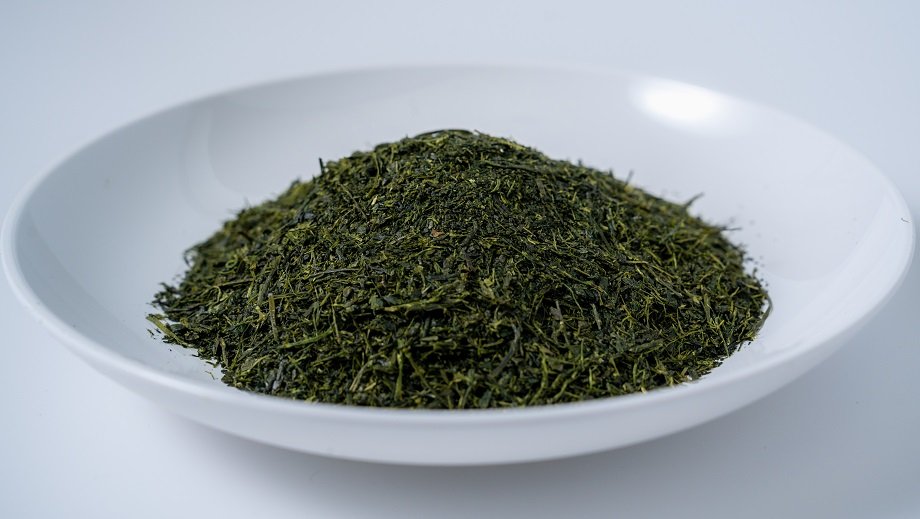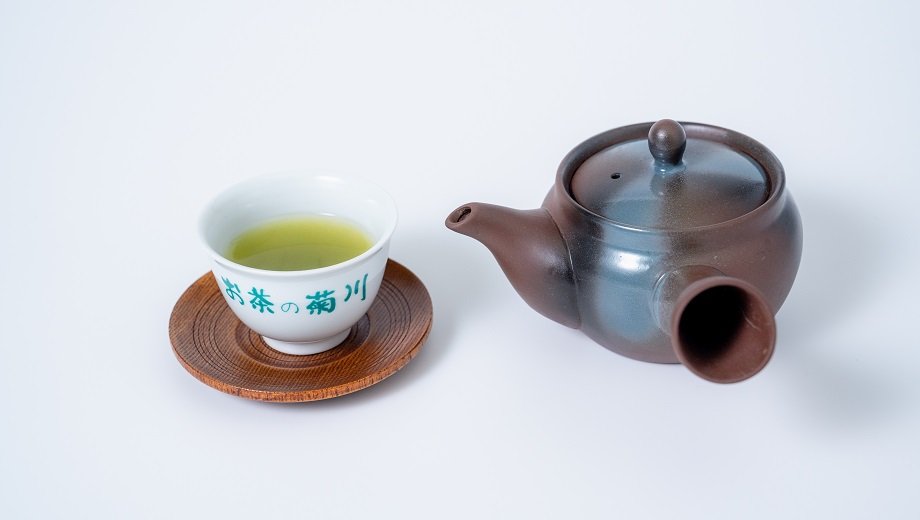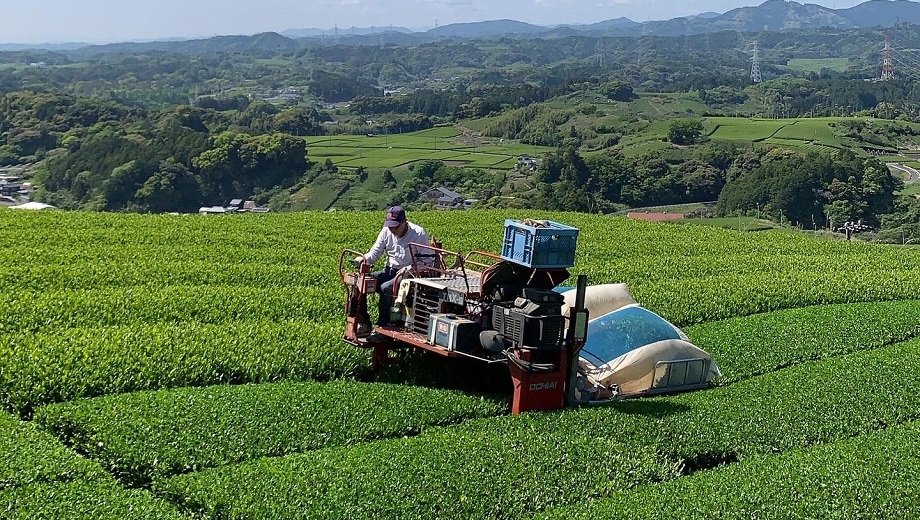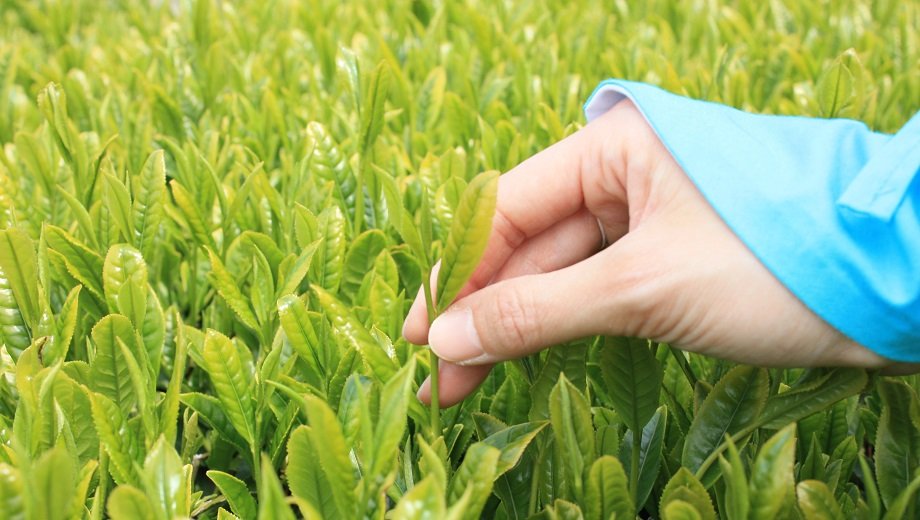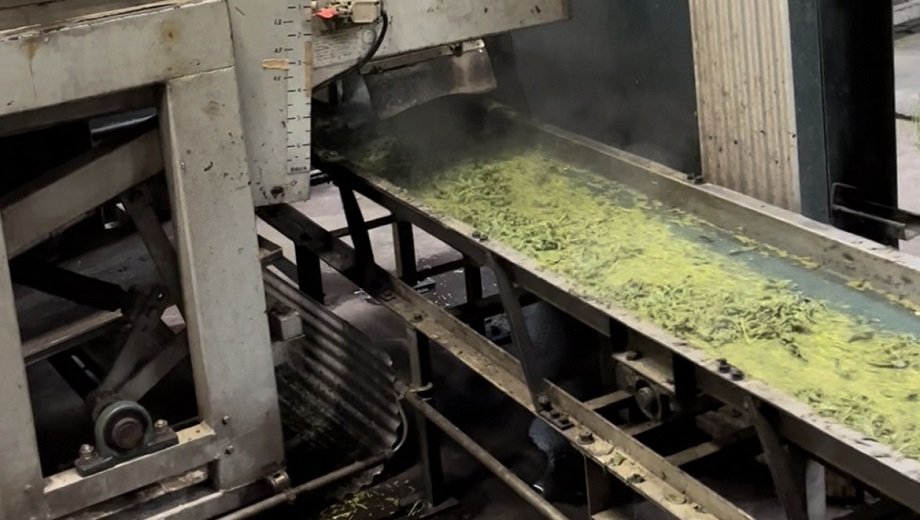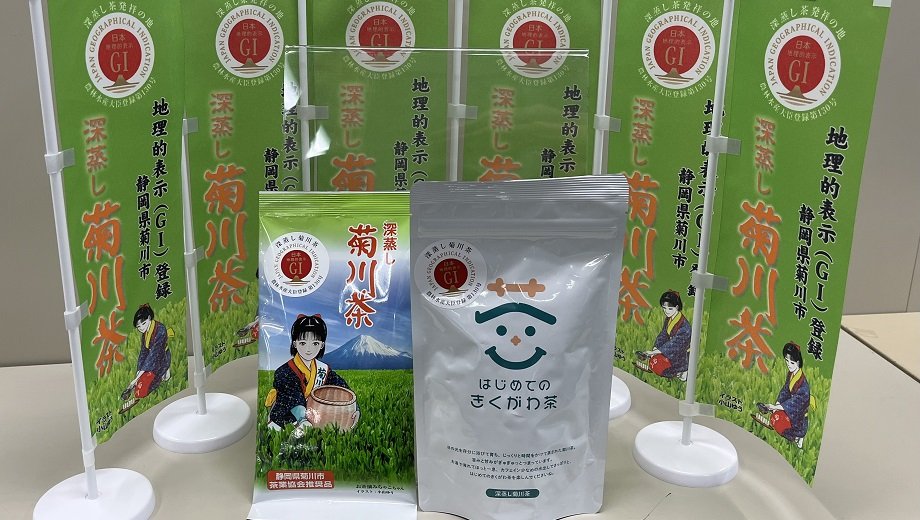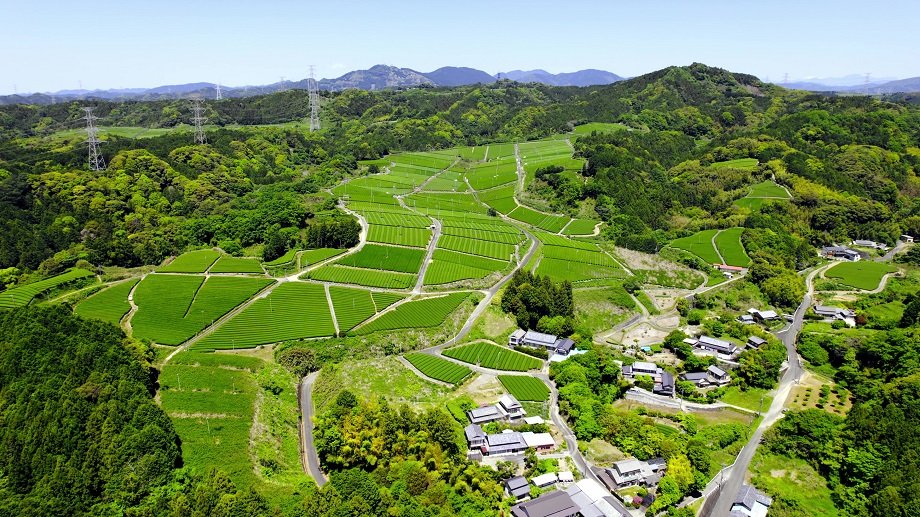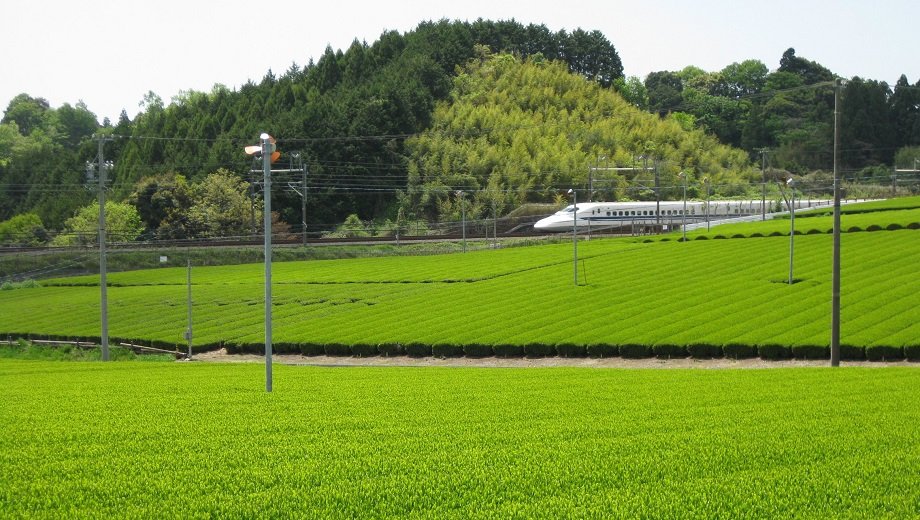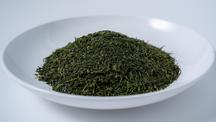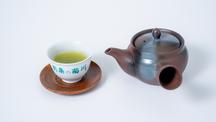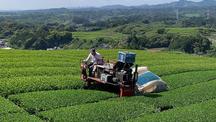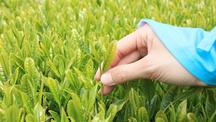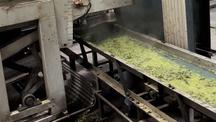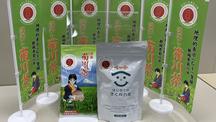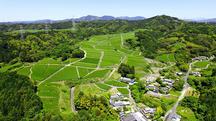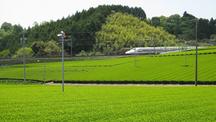Fukamushi Kikugawacha
| Registration Number | 130 |
|---|---|
| Name of the GI | Kikugawa deep steamed green tea, Deep steamed Kikugawa tea, Fukamushi Kikugawacha, Kikugawa Fukamushicha |
| Class | Processed Foodstuffs |
| Date of Protection | 2023/03/31 |
| Producing Area | Shizuoka Prefecture |
| Applicant - Name and Address | Kikugawashi Chagyo Kyokai 61 Horinouchi, Kikugawa City, Shizuoka Prefecture, 439-8650, JAPAN |
| Brand-site |
Producing Area
"Fukamushi Kikugawacha" is a green tea that has a rich yellow-green color when brewed, low astringency, and a mild taste. In addition to these characteristics, it is highly valued by consumers for its deep, rich aroma, umami, and fullness.
"Fukamushi Kikugawacha" is made from fresh tea leaves produced in tea gardens in Kikugawa City, Makinohara City (Katsuta, Higashihazama, Nishihazama, Ooyori, Sugegaya, Shima, Nunohikihara, Katahama), Kakegawa City (Sayoshika, Yasaka, Tamari, Kamiuchida, Takase, Nakahou, Naka, Shimohijikata, Shinonba), Shimada City (Kikugawa, Makinohara, Kiriyama, Kamiyashiro, Shishidoi), and Omaezaki City (Niino, Kamiasahina, Shimoasahina, Kadoya, Takamatsu, Goudo).
Tea production consists of two processes: aracha processing and the finishing process.
First, fresh tea leaves are processed into aracha at aracha processing plants that are approved by Kikugawa Green Tea Industry Association as ones observing the Association's processing standards. During the steaming process at an aracha processing plant, a machine approved by the Association should be used, and steaming and heating are carried out sufficiently by the standards set by the Association, including the duration of steaming and heating for the conveyor belt-type steamer and the inclination and rotation speed of the body for the mesh body rotation and agitation type steamer. The steamed leaves are then subjected to rough rubbing, twisting, medium rubbing, precise rubbing, and drying to become aracha.
Using only the aracha that has gone through the above process, the finishing process is carried out at factories in Shizuoka Prefecture, which have the technologies and facilities for the finishing of Fukamushi Kikugawacha.
Kikugawa City and its surrounding areas are warmer and receive longer hours of sunlight compared to other tea-producing areas, resulting in thicker tea leaves with larger catechin content. The resultant green tea tends to be astringent and was graded middle class in Japan.
Research from around 1952 led to the discovery that tea with low astringency and excellent taste can be produced by steaming tea leaves long (fukamushi, meaning "deep steaming" in Japanese).
In the producing area, a tea agricultural cooperative was established ahead of the rest of the country to systematically improve production technology and achieve mass production. "Fukamushi Kikugawacha" has contributed to adding a new category of "Deep steamed sencha" to the National Fair of Tea (1) and the spread and expansion of deep steamed tea throughout the country. The producing area became recognized as the birthplace of deep-steamed tea.
For more than 100 years, Kikugawa City and its surrounding municipalities have used a farming method that involves mulching tea fields with cut grass from semi-natural grassland called "chagusaba" to supply organic matter. This has created a characteristic landscape of semi-natural grassland interspersed with tea plantations and led to the production of high-quality tea as well as the protection of living creatures. The compatibility of agriculture and biodiversity has been recognized; and in 2013, the Food and Agriculture Organization (FAO) of the United Nations certified the "Traditional Tea-grass Integrated System in Shizuoka" as a Globally Important Agricultural Heritage System (GIAHS).
- The National Fair of Tea is a competitive exhibition where tea producers from all parts of Japan compete for good quality tea awards. The annual exhibition started in 1947, and producers compete in eight categories, including regular sencha, fukamushicha, kabusecha, and gyokuro. It is held by Japanese Association of Tea Production.
